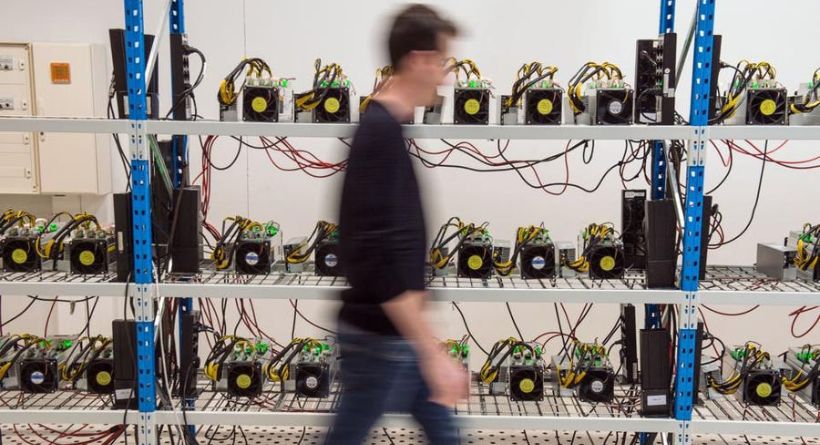Tesla discontinued accepting Bitcoin for the purchase of electric vehicles in 2021. Why? concern about the impact on the ecology of mining, the procedure used to create new units of the most popular cryptocurrency in the world.
A lot of the power used by the computers to create new Bitcoins is produced from fossil fuels. One of the things that gives the digital money, which is presently trading at roughly $23,600, actual world worth is the cost of power.
Mining is essential to Bitcoin’s survival as a decentralised currency, regardless of the electricity source, and the cryptocurrency mining sector is shifting toward sustainable energy sources.
What Is Bitcoin Mining?
A global network of computers running the Bitcoin code collaborates in a process known as “mining” to make sure that transactions are accurate and added to the blockchain of the cryptocurrency in a timely manner. Additionally, fresh Bitcoin enters the market through mining.
Owner of the informational website BitcoinMiningSoftware.com Stefan Risti claims that “Bitcoin mining is what keeps the Bitcoin network safe.
Competing supercomputers race to be the first to approve a block—a collection of transactions—and add it to the blockchain.
Transaction fees and 6.25 BTC every block are paid to miners for their work (if they solve the block correctly). At today’s pricing, that amounts to almost $147,000.
According to Richard Baker, CEO of miner and blockchain services provider TAAL Distributed Information Technologies, “the mining, or transaction processing, is carried out by extremely expensive and powerful computers whose sole purpose is to run algorithms to solve the mathematical problem that allows their owner to win a Bitcoin block—and the money that comes with it.”
How Does Bitcoin Mining Work?
Solving complicated algorithms is required for the verification of Bitcoin transactions and their recording on the blockchain. All of this is a function of the proof-of-work consensus algorithm used by Bitcoin, which tries to add a new block every ten minutes.
A miner has a higher chance of winning blocks the more computational power it possesses.
According on how much computer power they use, customers have a chance to earn Bitcoin every ten minutes, according to Bruce Fenton, CEO of fintech firm Chainstone Labs.
According to Patricia Trompeter, CEO of cryptocurrency miner Sphere 3D Corp., the newest Bitcoin mining equipment uses application-specific integrated circuits (ASICs) particularly designed and coded for Bitcoin mining to handle all the computational power required.
According to Rob Chang, CEO of privately held Bitcoin miner Gryphon Digital Mining, the current generation of these specialised Bitcoin mining rigs produces potential solutions to the Bitcoin block equations at a pace of about 100 trillion hashes per second.
A Bitcoin hash is a mining metric for calculating how much processing power is applied to the network to handle transactions.
How to Mine Bitcoin?
As the network increases the mining difficulty to maintain a consistent flow of new blocks of transactions even as more miners participate, the energy needed to manufacture Bitcoin has grown since its 2009 launch.
Bitcoin mining is often carried out on a big scale by businesses employing data centres with specialised servers. Numerous mining computers may be kept in warehouses by mining farms.
According to David Weisberger, CEO of trading platform CoinRoutes, “the input that determines whether such activities are profitable is the cost of electricity to power the mining computers.”
As a result, farms are frequently situated next to energy sources including geothermal sources, solar farms, oil and gas wells, and dams.
According to Jagdeep Sidhu, president of the Syscoin Foundation, which stands for the open-source blockchain project Syscoin, “the more network participates, the higher the difficulty grows.”
How to Mine Bitcoin at Home?
Home miners are at a disadvantage against institutional miners due to high expenses as the latter can obtain cheap electricity and save money by buying Bitcoin mining machines in bulk.
Despite the fact that some people run Bitcoin mining companies from their homes, Baker claims that the cost and regulation of mining have driven away smaller miners.
But it doesn’t mean it’s impossible to mine bitcoins at home.
An ASIC Bitcoin mining rig, which may easily cost more than $10,000, is required if you want to seriously mine Bitcoin at home.
However, considering the cost of domestic power, Trompeter contends that mining at home could not be economical. Additionally, ASICs are highly noisy and can overheat if they are not properly cooled.
You may use an online Bitcoin mining calculator that takes your power expenses into account along with other inputs to examine your potential profitability.
Even individuals who possess ASIC mining equipment at home usually pool their processing power with that of other individuals who also own ASIC equipment and divide the Bitcoin reward according to their portion in the pool. While you may mine a block effectively on your own, doing so is sometimes equated to winning the lottery.
Another option is cloud mining, where you purchase, rent, or lease computer power that is hosted by a third party.
How Long Does it Take to Mine One Bitcoin?
Risti notes that since a new block is created about every 10 minutes, a new Bitcoin is created every 96 seconds. But it’s possible that numerous miners throughout the world split that one Bitcoin.
According to William Szamosszegi, CEO of Sazmining, a platform that links lone retail miners with active green Bitcoin mining operations, it can take a very long time for one miner to produce one Bitcoin.
The reach of a bitcoin mining firm is as follows: 61 Bitcoin equivalents were mined in April, according to a report from Gryphon Digital Mining.
These outcomes demand a lot of processing power. (The business even invested $48 million in more than 7,000 Bitcoin mining equipment for its activities in July 2021).)
Due of the intense competition, the majority of Bitcoin miners collaborate as a mining pool. By participating in the pool, participants increase their chances of solving a block on the blockchain of Bitcoin by combining their hash rate.







